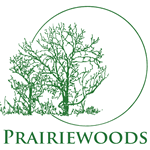In last Monday’s blog (https://prairiewoods.org/interior-wilderness/), we offered an exercise to plunge deeper into our interior wilderness in the aftermath of loss. Whatever “storm” we have recently endured, environmental, communal or personal, the loss profoundly affects our sense of self, our identity. Once we have begun exploring our interior wild-scape after a loss, and we begin the process of healing the scars, gouges, barrenness and charred remains, we might notice something extraordinary: new life is emerging. Our identity is expanding. It is precisely because we are awakening to our interior devastation as a human community that we are able to connect more profoundly with the biosphere as a whole.
How do we hold all this grief from overwhelming global loss? We have noticed that pervasive fear, sadness and alienation from the natural world have taken hold of our psyche (from the Greek word psuche, meaning “soul”), and we can no longer deny nor escape the effects. Anima mundi, world-soul, is weary, and our human experience reflects the malaise. Witness the phenomenon of ecophobia (https://naaee.org/eepro/research/library/childrens-environmental-concerns), in which children express feeling overwhelmed with fear, uncertainty, cynicism, sadness and anger at the state of Earth and its prospects for the future. Solastalgia is another term that has found its way into eco-awareness, the emotional disquiet about negative changes in one’s environment (https://schott.blogs.nytimes.com/2011/05/17/solastalgia/). Nature deficit disorder, a term coined by Richard Louv in 2005, describes the deleterious effects of human alienation from nature (http://richardlouv.com/blog/what-is-nature-deficit-disorder). All these terms speak to the dis-ease of our communal human identity as we cope with pervasive eco-devastation. If new terms are introduced to our language to account for widespread human experience, our burgeoning awareness also indicates our readiness for intentionality in healing Earth’s wounds, a readiness for “active hope,” as Joanna Macy says, “the work that reconnects.”
During the pandemic, we have been invited to go deeper into our interior awareness by taking this time for “PanDeepening.” We have been able to see how our physical distancing, mask-wearing, infection-bearing, care-giving, and the sheer stress from the socio-political and economic upheaval has affected us personally and as a human community. It hurts to be so physically isolated for our own health, when we, as social, tactile beings are deliberately keeping ourselves at bay. We know and feel this pain within ourselves and everywhere among our human family.
What is unique about this time of growing consciousness is that we have become much more aware that our human drama is intimately intertwined with the welfare of the biosphere. When we say “We,” we are starting to include much more readily our other-than-human kin. Earth’s water, air, soil, trees and wild creatures are all crying out, and we humans are beginning to listen, to relearn the ancient language, the Mother-tongue, love’s poetry, the language of Earth. Now, in the context of wildfires, hurricanes, derechos, floods and earthquakes that have rendered Earth asunder, the devastation all around us is a constant reminder that we humans are not alone in our suffering. And this particular time reminds us of the importance of learning from the sacred Earth, the precious water, “brother sun and sister moon,” as St. Francis might say, our creature-kin and our arbor elders to teach us how to reconnect, and to consider the wider “We” in the process of healing.
In Cedar Rapids following the Aug. 10 derecho, tree-people, wildlife fans and especially bird-lovers have been welcoming the slowly-returning tree-creatures as they rediscover uprooted trees, stumps, downed limbs and hollowed-out husks of trees that survived the sustained 120 mph winds. Creatures are incredibly resilient as they nestle into the remains of the devastation, co-creating pockets of safety, comfort and connection wherever possible. Disoriented at first, they re-calibrate themselves and their sense of direction by tuning into the new light, sound and wind patterns, finding water and food sources in new places, and coming into their own new configurations as flocks, mates, companions and symbiants. The trees themselves are exhibiting amazing resilience by rooting and spreading wherever they can in the surrounding soil, their decaying stumps and root systems providing unfathomable varieties of eco-systems with sustaining nourishment and habitat. They know how to survive and thrive because they live into what IS, rather than what WAS. What might we learn from them?
If our interior wilderness feels a little battered, it is completely understandable. Humans operate with our spiritual and emotional energy as a deep thrumming, readily recognizable by tapping into breath, into heartbeat, into relationships of love, into conscious consideration of ourselves as part of a much wider whole. Yes, the interior wildness can be terrifyingly empty, achingly desolate, dry, volcanic, or awash in corrosive fear and anxiety. It can also yield to calm tranquility when our awareness of breath, of heartbeat, of gratitude and Love centers us. More important, that awareness can connect us to the wider “We,” where we can find healing, peace and transformation. Altogether, we can learn how to root deeply, spread into new, fertile soil and wait patiently for new life to emerge from the rubble. It always does. Life finds a way.

A photo of a 50+ year-old apple tree from the author’s homestead, taken after the derecho, amid the wreckage.

It bloomed for the second time this season three weeks after the derecho. Life finds a way!
—Laura Weber, Prairiewoods associate director and retreats coordinator


